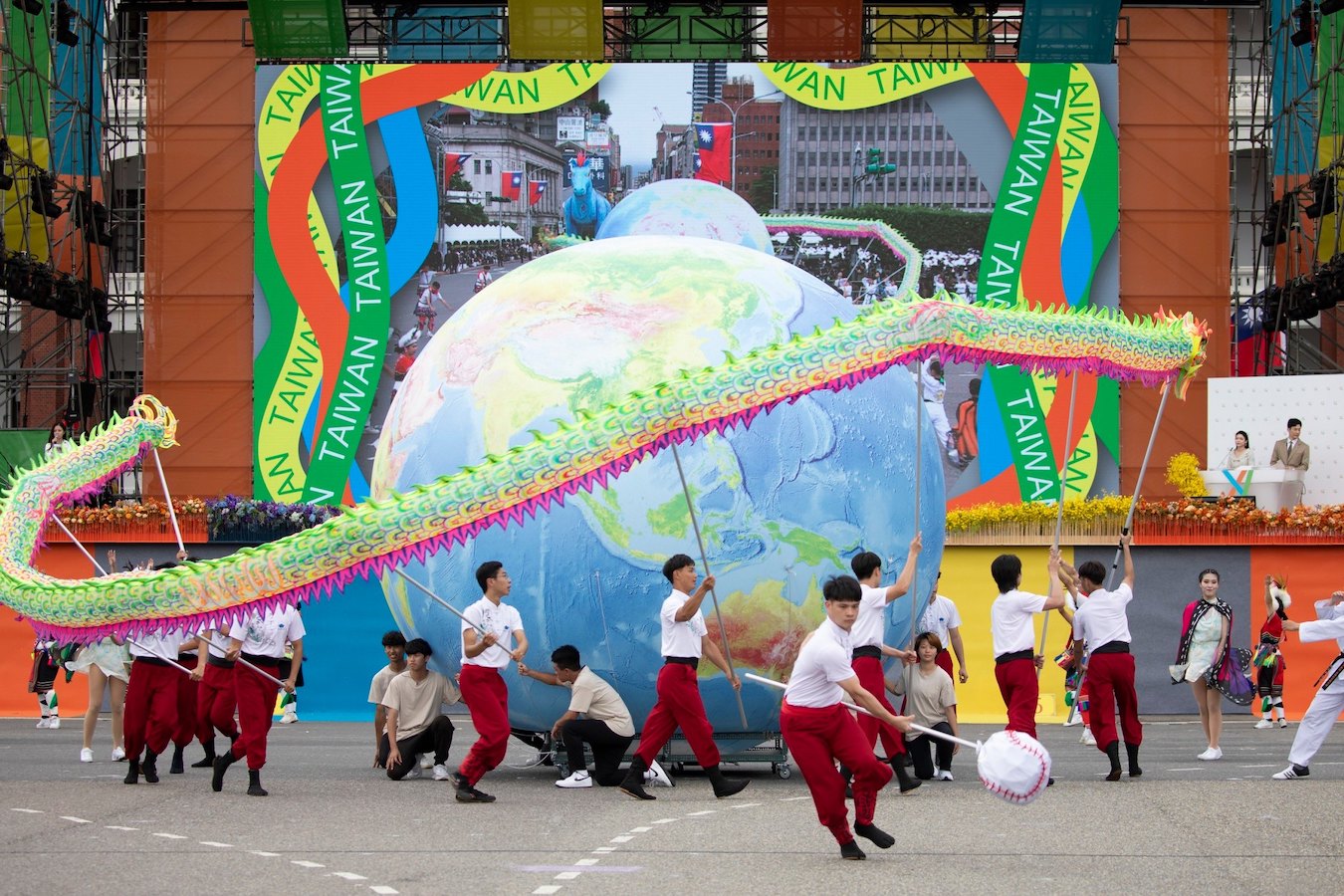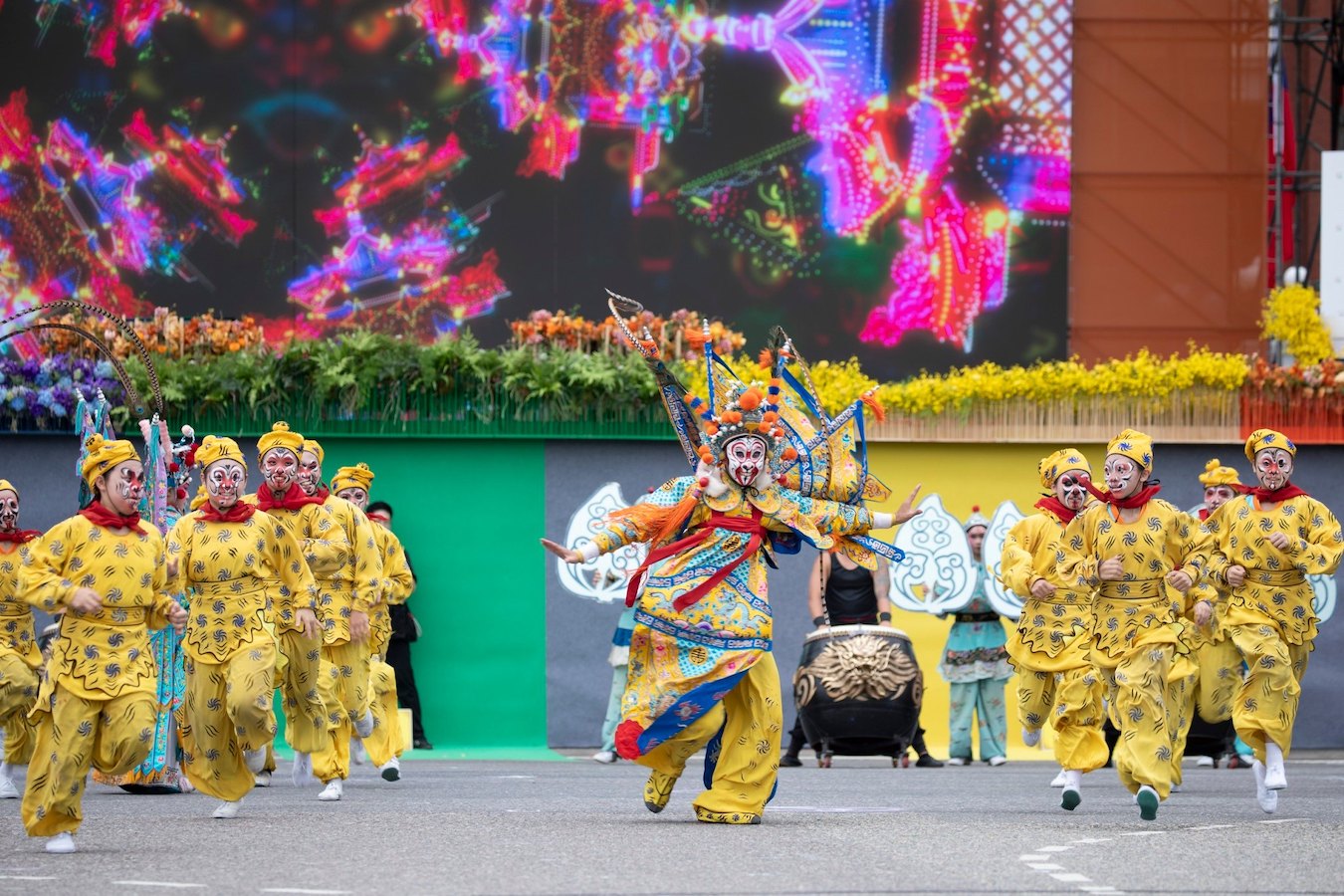by Brian Hioe
語言:
English
Photo Credit: I Chen Lin/Office of the President//Flickr/CC BY 2.0 DEED
THE AESTHETICS OF presidential inaugurations often reflect the image that incoming presidential administrations hope to convey, with regard to everything from performances to the meals eaten at the presidential banquet. This was the case with the Lai inauguration today, as could be seen from the performances that preceded the inauguration.
 Hip hop performance at the inauguration. Photo credit: I Chen Lin/Office of the President/Flickr/CC BY 2.0 DEED
Hip hop performance at the inauguration. Photo credit: I Chen Lin/Office of the President/Flickr/CC BY 2.0 DEED
In particular, the Lai administration has sought to convey continuity with the Tsai administration, as the preceding DPP political administration. The DPP has now held an unprecedented third term in office. As such, the performances that preceded Lai’s inaugural address–titled “Consensus Moving Forward”—largely followed the tropes of the “Taiwan’s Light” performance that took place when Tsai was sworn into office for the first time in 2016.
Other signs of continuity included Fire EX, the band that wrote and performed Sunflower Movement anthem “Island’s Sunrise” and other campaign songs of the Tsai administration, again performing at the inauguration. A performance featuring dancers dressed in costumes of Taiwanese native fruit and vegetables as other performers handed out fruit and vegetables to attendees recalled the anthropomorphic bubble tea dancer in the “Taiwan’s Light” performance, as did the baseball outfits worn by some dancers.
 Popping and locking performance at the inauguration. Photo credit: I Chen Lin/Office of the President/Flickr/CC BY 2.0 DEED
Popping and locking performance at the inauguration. Photo credit: I Chen Lin/Office of the President/Flickr/CC BY 2.0 DEED
That is, a great deal of effort was placed into showcasing Taiwan’s cultural diversity and the pluralistic values of contemporary Taiwan. This was embraced by the Tsai administration as a way of appealing to politically progressive young people in the wake of the 2014 Sunflower Movement, with the DPP deliberating distancing itself from benshengren ethnic politics that were viewed as out of date or exclusionary by participants in the Sunflower Movement, sometimes termed the first post-ethnic movement in Taiwanese history that had transcended the historic divide between benshengren and waishengren.
 The Hakka “rain horse,” performers dressed as fruit and vegetables, tigers, and cheerleaders. Photo credit: I Chen Lin/Office of the President/Flickr/CC BY 2.0 DEED
The Hakka “rain horse,” performers dressed as fruit and vegetables, tigers, and cheerleaders. Photo credit: I Chen Lin/Office of the President/Flickr/CC BY 2.0 DEED
As such, there was an emphasis on performances featuring artists from a variety of backgrounds. For example, Golden Melody Award-winning Indigenous singer Ilid Kaolo, as Hakka rapper Vuize and KE., who rapped in Taiwanese Hokkien were among the performers. Interestingly, sometimes this sought to point toward the hybridization of culture, with Ilid Kaolo performing part of quintessential working-class Han “taike” rocker Wu Bai’s ballad, “Love You for Ten Thousand Years.” As for Vuize and KE.’s performance, this was touted as the first time that hip hop had been featured at a presidential inauguration. The 10-meter tall Hakka “Rain Horse” by the Paper Windmill Theater was also featured in the demonstration.
 Photo credit: I Chen Lin/Office of the President/Flickr/CC BY 2.0 DEED
Photo credit: I Chen Lin/Office of the President/Flickr/CC BY 2.0 DEED
To this extent, the emphasis on Taiwanese identity was an underpinning of the demonstration, particularly in juxtaposition to China. With Lai’s inaugural address referring to a “Taiwan of the world,” as distinguished from a Taiwan that is part of China, a globe was held up during the performance.
With performances of traditional temple acrobatics, this was merged with contemporary rock music and post-Internet aesthetic visuals as the projected backdrop behind performers, to show how traditional temple acrobatics and temple performances have been modernized in Taiwan. This featuring of temple culture continues the trend of how temple culture has increasingly been cast as quintessentially Taiwanese in contemporary Taiwan, rather than part of Chinese culture due to originally being from China, with the view that Taiwan has preserved such arts in a way that China did not due to the Cultural Revolution. Likewise, the spotlighting of temple culture also dovetails with how temple culture was framed as low class by the KMT when it came to Taiwan, much as things Taiwanese were generally framed as low class by the KMT.
 Photo credit: I Chen Lin/Office of the President/Flickr/CC BY 2.0 DEED
Photo credit: I Chen Lin/Office of the President/Flickr/CC BY 2.0 DEED
Yet while this mostly continues trends seen during the Tsai administration, what was unique about this inauguration was to what extent the military was featured–and efforts were made to change the image of the military to make it more amenable to post-Sunflower Movement young people that value cultural pluralism in contemporary Taiwan.
A military band played traditional Indigenous melodies, Lim Giong’s Taiwanese Hokkien classic “Marching Forward”, and the theme song for Kano, the film about the multiethnic Taiwanese baseball team during the Japanese colonial period that was popular around the time of the 2014 Sunflower Movement. This was a clear attempt to change the image of the military from how the military has historically been seen as a bastion of ROC nationalism, and viewed as the political enforcer of the KMT during authoritarian times, to recast the military as in line with the values of progressive young people today. This undertone was also visible in how Lai touted tech industries with potential defense applications, such as unmanned aerial vehicles (UAVs) and the space industry, as providing job opportunities for young people.
 Projected military backdrop during the performance. Photo credit: Simon Liu/Office of the President//Flickr/CC BY 2.0 DEED
Projected military backdrop during the performance. Photo credit: Simon Liu/Office of the President//Flickr/CC BY 2.0 DEED
This sets the tone for how the Lai administration hopes to outreach to young people, although efforts to rehabilitate the image of the military were already visible under Tsai with many press photos of Tsai with the military released by her presidential administration in past years, especially in her second term. Whether such efforts are successful in changing the image of the military among youth is to be seen.

